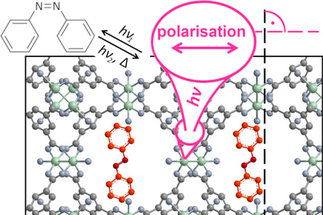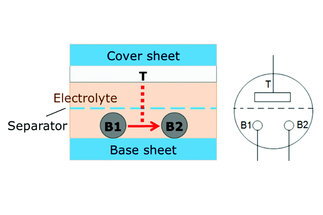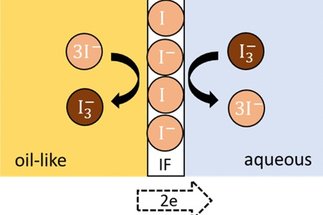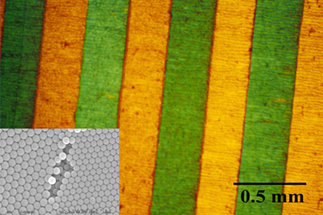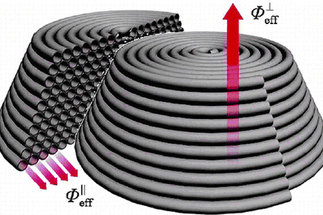Nanostructures and Optical Materials
Crucial targets of nanoscience are new materials and devices. They can be based on known physical phenomena improving them, or they can apply completely new principles. New materials, physical phenomena, new principles - in this triangle we move with our research projects. Our fields of interest are photonic crystals, especially artificial opals, hierarchical materials, self-assembly and self-organization, directed self-assembly, alternative principles for solar cells, and Grätzel cells.
Our fields of interest are:
• Photonic crystals, especially artificial opals
• Hierarchical materials
• Self-assembly and self-organization
• Alternative principles for solar cells, Grätzel cells
• NLO and switchable materials
• Iontronic devices
Research Topics:
Metal-organic frameworks (MOFs), Covalent-organic frameworks (COFs) and similar materials have attracted a great deal of attention in the last few years. Potential areas of application include catalysis, gas adsorption, switchable systems, sensor technologies and many more. In our workgroup we investigate guest molecules inside the pores that can be influenced by external stimuli. The possibility to freely align azobenzene molecules with linearly polarized light could be demonstrated...
more
Iontronics started as a concept of controlling electronic devices using ions. Now in iontronics, ions are used to transmit, generate and store signals. This is interesting for neuromorphic applications, new computing methods, and reduction of the energy consumption in information processing...
more
“Liquid|liquid interfaces (LLIs) strike our mind not only with every oil catastrophe but also when thinking about many home-cooked and industrial food products. There are important exchange processes through these interfaces determining degradation and molecular uptake processes.
For regenerative energy sources, not only high efficiencies but also economical facts are important. Therefore, the well-developed high-efficiency solar cells are not competitive to traditional energy sources without financial support...
more
Opals are not only beautiful gemstones, they also have fundamental significance as prototypes for photonic crystals. They may lead to new photonic and photocatalytic materials. The crucial problems of these materials are the spontaneous defects and the desired incorporation of specially designed defects. In the works below, we described basic ideas and our approaches to special topics....
more
This research area was active in our research group until 2007, but it has still an influence on the on-going research.
A prerequisite for an efficient „molding the flow of light“ by photonic crystals is the molding of materials in desired nanostructures. Very often, conventional materials and processing techniques cannot fulfill the theoretical requirements for the materials and structures. Sol-gel methods enable material processing in opal pores and the controlled introduction of pores into materials...
more
Links:
CeNIDE
NETZ
Chemie.de
IMPRS-Surmat
DPG
Bunsengesellschaft
Universität Duisburg-Essen
Researchgate
